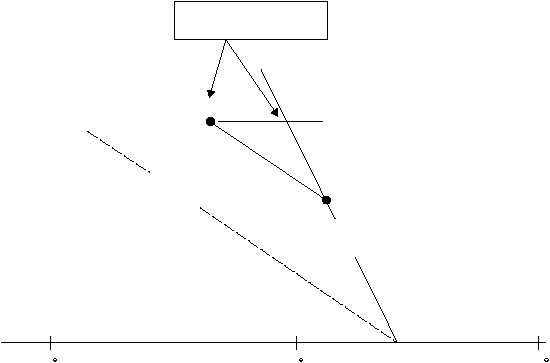has a tendency to continue to rise, seeking air of its own
density. Consequently the column becomes unstable.
From this, the rule is established that if the lapse rate of
a column of air is greater than the dry adiabatic lapse
rate, the column is in a state of ABSOLUTE
INSTABILITY. The term absolute is used because this
applies whether the air is dry or saturated, as is
evidenced by displacing upward a saturated parcel of
air from point A along a saturation adiabat to point B.
The parce1 is more unstable than if displaced along a
dry adiabat.
STABILITY.—Consider a column of dry air in
which the actual lapse rate is less than the dry adiabatic
lapse rate. The actual lapse rate is to the right of the dry
adiabatic lapse rate on the Skew-T diagram (fig. 2-11).
2-17
AG5f0210
A
SATURATION
ADIABATIC
LAPSE
RATE
DRY
ADIABATIC
LAPSE
RATE
ACTUAL
LAPSE
RATE
-10
0
10
B
B1
POINTS B (DRY ADIABATIC) AND B (MOIST ADIABATIC)
WARMER THAN SURROUNDING AIR
1
Figure 2-10.—Absolute instability (any degree of saturation).
AG5f0211
-10
0
10
DRY ADIABATIC
LAPSE RATE
ACTUAL
LAPSE RATE
B
POINT B COLDER THAN
THE SURROUNDING AIR
A
Figure 2-11.—Stability (dry air).




